#ToyotaCorona
Abandoned History: Daewoo Motors, GM's Passport to International Sales (Part II)
We return to our Abandoned History coverage of Daewoo Motors in the early part of the Sixties. Korea was a newly independent nation still in the process of building its economy after many decades of Japanese occupation. The new Korean government seemingly relied on two tenets in its earliest years: Centralized control and openness to bribes.
Both those factors were at play when the government handed the production of all passenger cars to a single company, Saenara Motors. Via a huge loan and technical assistance from Nissan, Saenara built Korea’s first car, the Saenara (Datsun) Bluebird via knock-down kits assembled in South Korea. But once the government noticed there was too much capital flowing out of the country, they banned Saenara from buying more kits from Japan. The scraps of bankrupt Saenara were picked up by another company, Shinjin.
Rare Rides Icons: The Toyota Cressida Story (Part IV)
We’ve come to the end of our Cressida journey, and the short-lived fourth generation. Conservative and staid as ever, Cressida’s final entry was squeezed out of the lineup from above and below: The crushing weight of Lexus came down upon the late Eighties Cressida shortly after its introduction, while Camry smashed it from below. Put on your Urban Sombrero and let’s go.
Rare Rides Icons: The Toyota Cressida Story (Part III)
Today we find ourselves in the third installment of Toyota Cressida coverage. The first Cressida bowed in 1978 with curvy European styling influences and was a more luxurious take of the Corona Mark II with which North American consumers were already familiar. After a short run from 1978 through 1980, a second-generation Cressida was introduced for ’81. It pursued a much more traditional three-box sedan shape, and looked quite Japanese despite marketing statements about how it was “European looking.”
Under the conservative shape were a number of whiz-bang electronic features, all applied to an interior that was redesigned solely for the American market Cressida. The second Cressida was more successful than the first, and new tech features like electronic fuel injection made it more desirable. After another short model run from 1981 to 1984, it was time for the third generation Cressida. The new one in 1985 was even more conservatively styled than the two that came before it. Say hello to X70.
Rare Rides Icons: The Toyota Cressida Story (Part II)
In Part I of this series we were introduced to Toyota’s Cressida, aka Mark II in almost every other market. A “new” model for the North American market, Cressida picked up where the Corona Mark II left off. The main reason behind the branding change was that Cressida had greater upmarket intentions than the Mark II. When it arrived for 1978 in North America, Cressida wore entirely different styling to its predecessor: Upright, formal shapes replaced the faster-looking curves of the Mark II. The conservative mid-sizer wore a Euro-inspired visage with many Jaguar cues, and the rest of the styling was a mixed bag of American and Japanese flavors.
But the first generation was not long for the world, and after just three model years Toyota released an all-new Cressida. This second edition stuck much closer to Toyota’s typical three-box playbook and added Eighties technology into the bargain. Time for X60.
Rare Rides Icons: The Toyota Cressida Story (Part I)
Our recent Rare Rides Icons coverage of the main quadrant of mid-Eighties Japanese family sedans ( Camry, Accord, Maxima, 626) brought another sedan to mind. Boxy and conservative, it was an upscale offering at a time when Japanese luxury brands simply did not exist. The sedan in question was popular enough for Nissan to target it directly with their Maxima. Presenting the Toyota Cressida, a comfortable luxury experience.
Rare Rides: 1968 Toyota Corona Coupe - an End of Luxury
Today’s Rare Ride hails from the first two decades of Toyota’s North American tenure. The Corona line was midsize, luxurious, and the pinnacle of the company’s offerings on this continent.
Come along and experience Corona.
Junkyard Find: 1974 Toyota Corona Station Wagon
Rare Rides: A 1974 Toyota Corona 2000 GT
Today’s Rare Ride is a case of forbidden fruit. Though North American consumers could buy something similar, this Rare Ride was never on domestic shores as new.
It’s the Toyota Corona 2000 GT, from 1974.
Junkyard Find: 1981 Toyota Corona Wagon
Because my very first car was a 50-buck ’69 Corona sedan in dazzling beige, I always photograph Coronas when I see them in wrecking yards. Sadly, Toyota stopped selling the Corona in North America in 1982, which means that I might see one every couple of years these days. Here’s a luxurious, fully loaded 1981 Toyota Corona wagon in a Denver self-service yard.
Rare Rides: The 1993 Toyota Caldina Wagon, Featuring Four-wheel Drive and Five Sunroofs
It may look like someone blended together the wagon versions of the Toyota Corolla and the Subaru Legacy, but today’s Rare Ride is something rarely (or never) seen on North American shores. Presenting the 1993 Toyota Caldina, with Sky Canopy.
Junkyard Find: 1980 Toyota Corona Liftback Sedan
I have an extensive formative history with the 1965-70 (third-generation) Toyota Corona, and so I photograph them whenever I find them in junkyards. So far in this series, prior to today, we’ve seen this ’66 sedan, this ’68 sedan, this ’70 sedan, and this ’70 coupe. Much harder to find in the United States is the 1979-83 Corona, which was replaced by the Camry in the U.S. market for the 1983 model year.
Here’s an extremely rare 1980 Corona liftback that I spotted in Denver last month.
Junkyard Find: 1971 Toyota Corona Mark II
My first car was a beige ’69 Corona sedan, and so I’m always happy to see a junkyard Corona. In this series prior to today, we’ve seen this ’66 sedan, this ’68 sedan, this ’70 sedan, this ’70 coupe, plus this Corona ad from the February 1969 issue of Playboy. Now I’ve found a Corona Mark II at a Denver yard.
Junkyard Find: 1966 Toyota Corona Sedan
As I always mention when writing about the the Toyota Corona, my first car was a beige ’69 four-door. Examples of the first generation of the Corona sold in the United States remain defiantly uncollectible for the most part (though a few do get restored and/or customized here and there), which means that beat-up ones wash ashore at self-service wrecking yards when they no longer serve as cheap transportation. In this series so far, we’ve seen this ’68 sedan, this ’70 sedan, this ’70 coupe, and this bonus Corona ad from the February 1969 issue of Playboy. Today’s find is the result of an archeological expedition into an old backup hard drive dating from early 2007, so this California Corona was shredded and put on a container ship in the Port of Oakland about seven years back.
Adventures In Marketing: 1970 Toyota Corona Beats Green Monster Jet Car In Drag Race
Since my first car was a 1969 Toyota Corona sedan, I always look for these cars in junkyards. I toy with the idea of getting another first-gen Corona sedan someday, into which I will swap a 1UZ-FE engine out of a Lexus LS400, so of course I check the internetz for old Corona ads. Here’s a good one!
Junkyard Find: 1968 Toyota Corona Sedan
Since my first car was a Corona and I’ve had quite a bumper crop of Corona Junkyard Finds this year (including this ’79 LE sedan, this ’70 sedan, and this ’70 coupe, the last of the 2012 Junkyard Find Series might as well be this ’68 sedan.



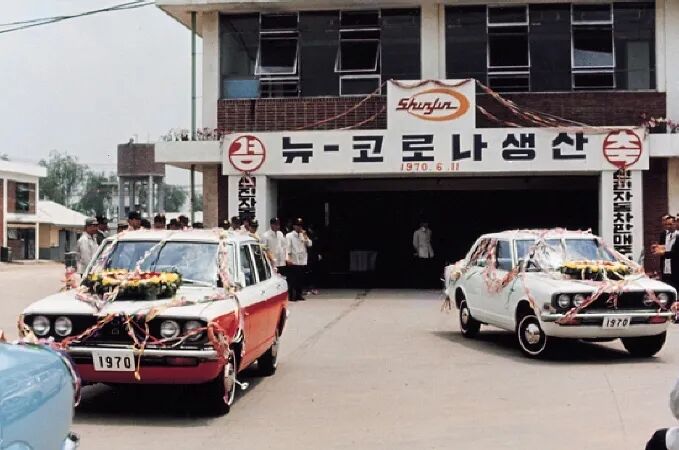
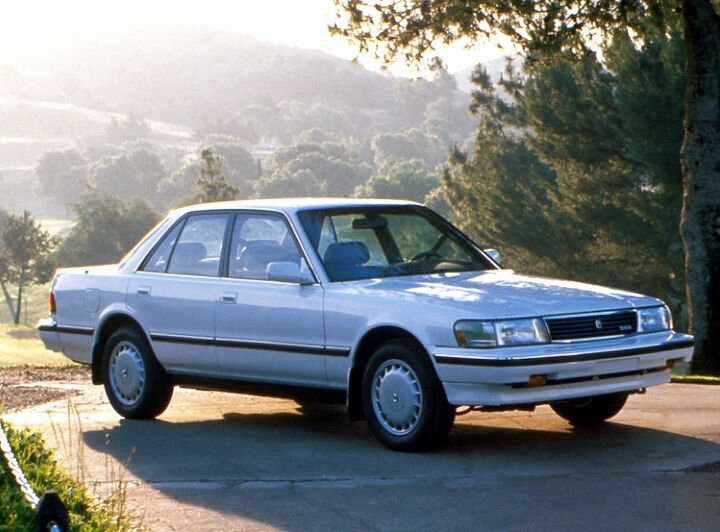


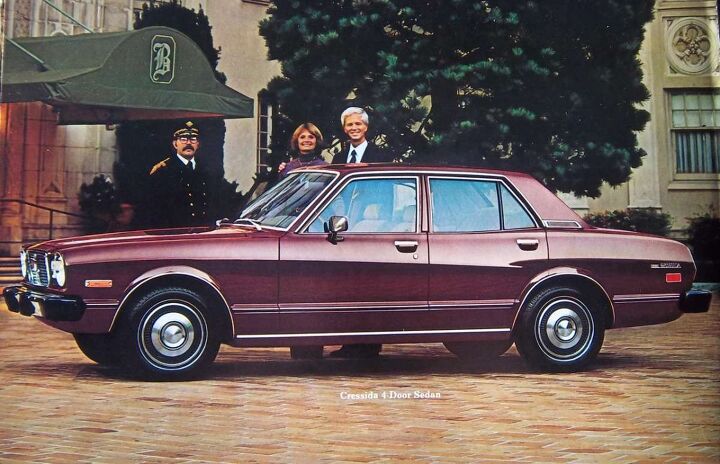
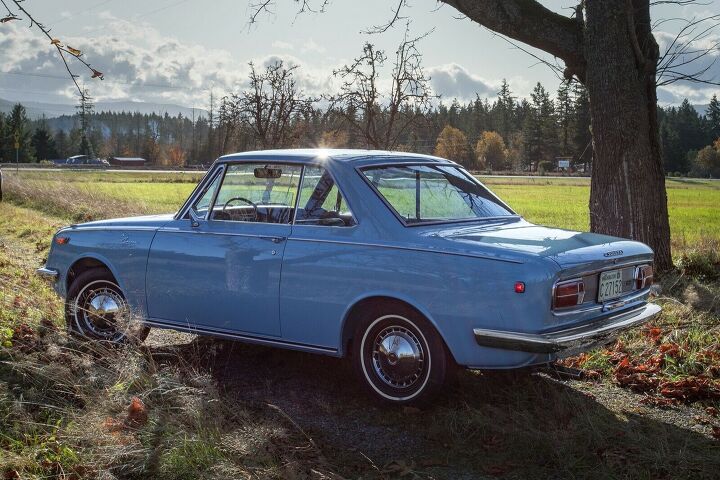


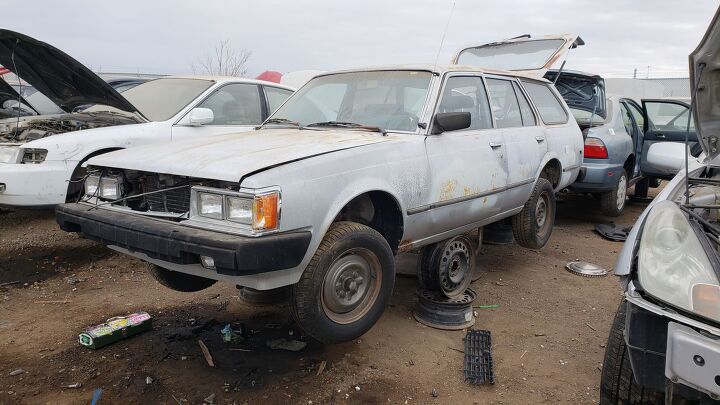
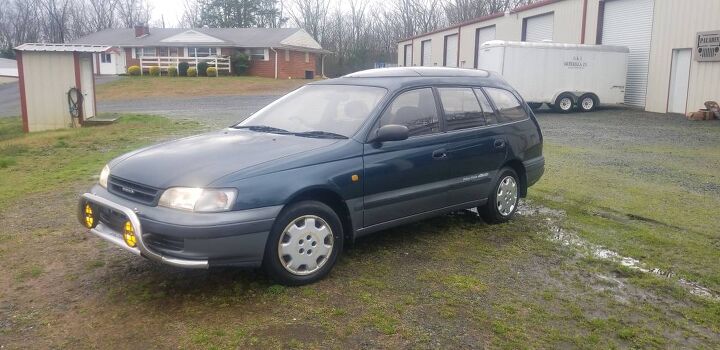
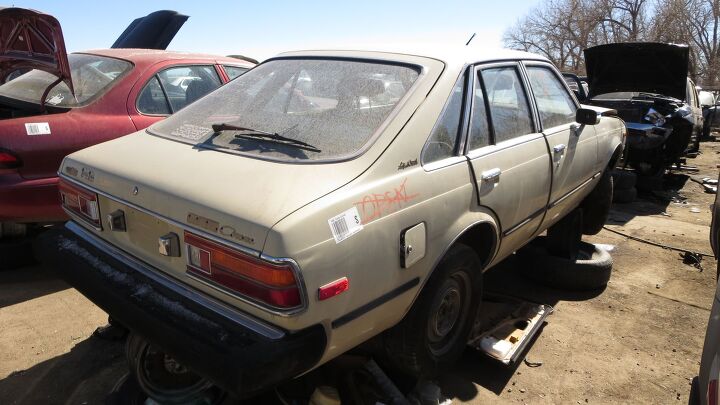

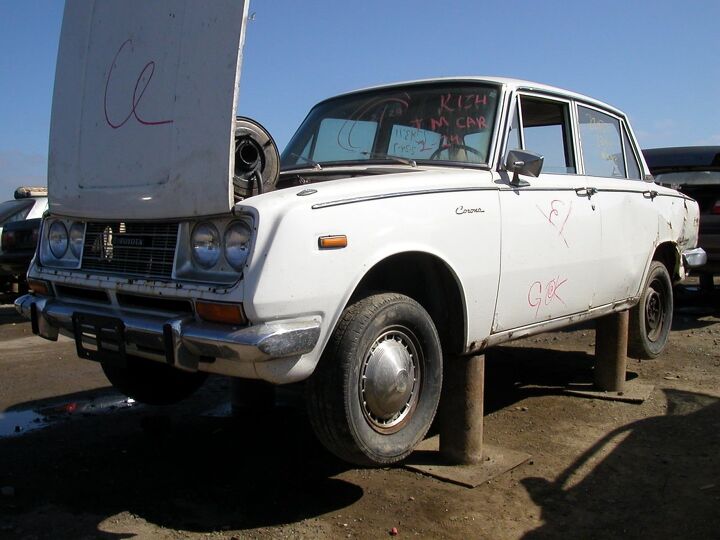
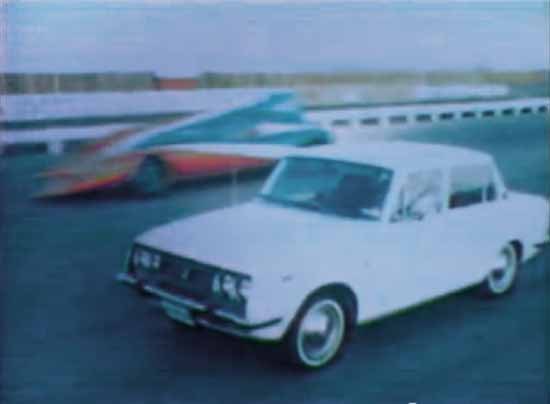
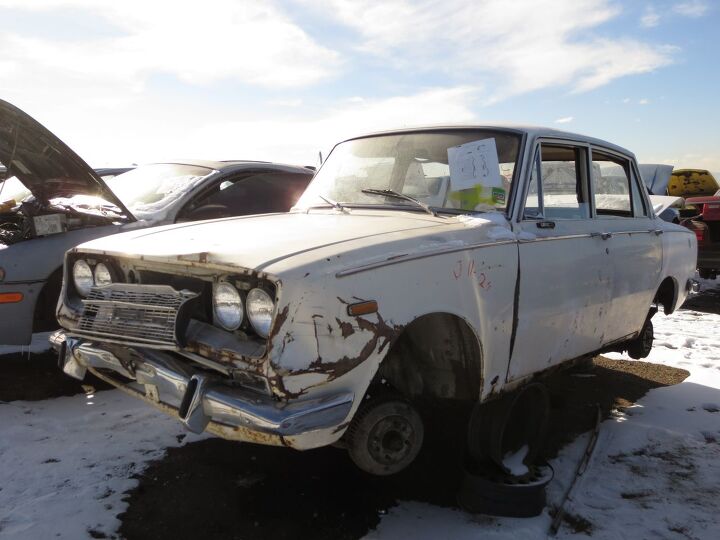












Recent Comments